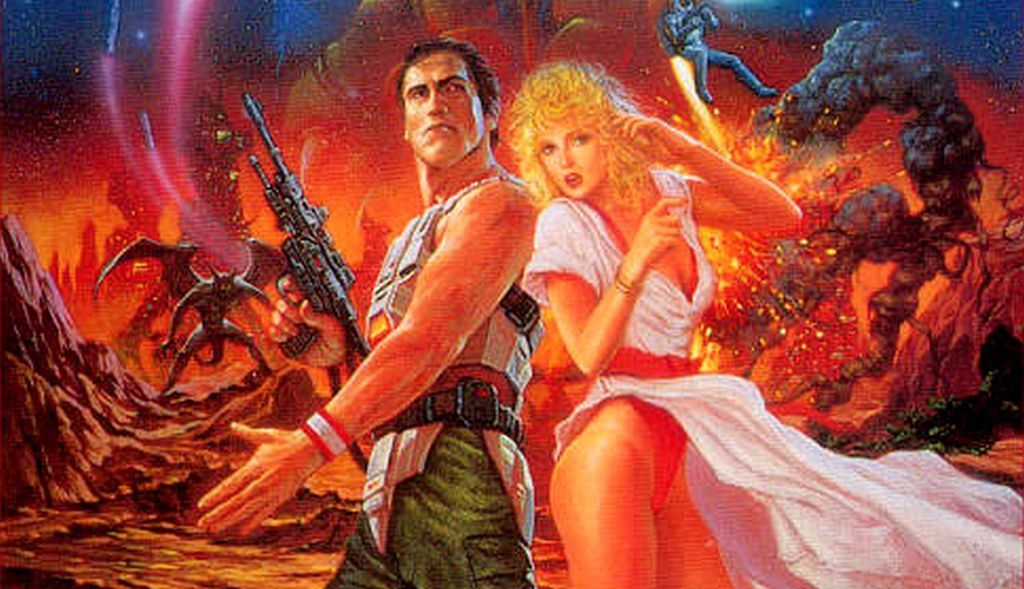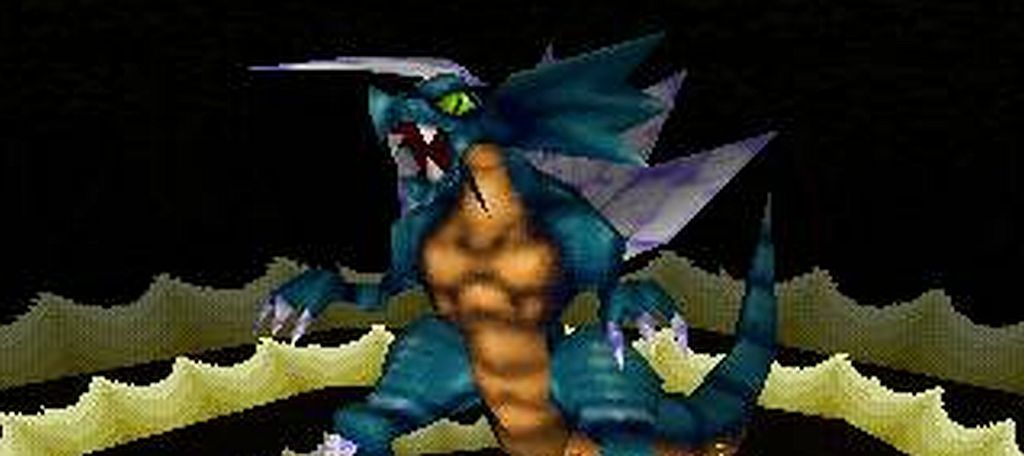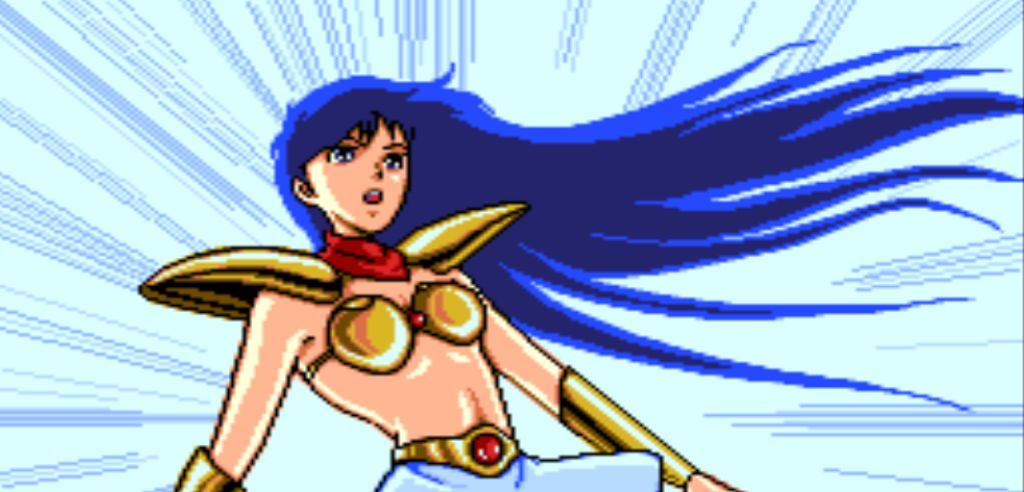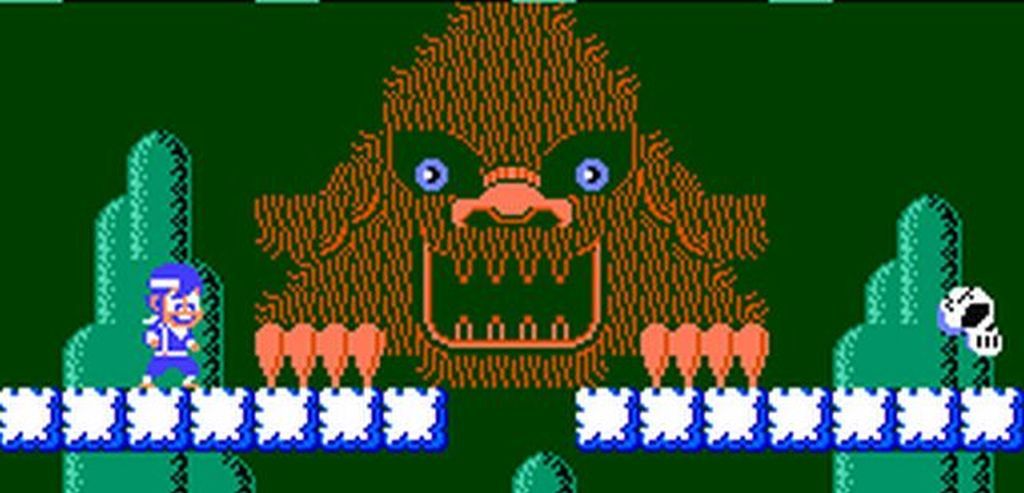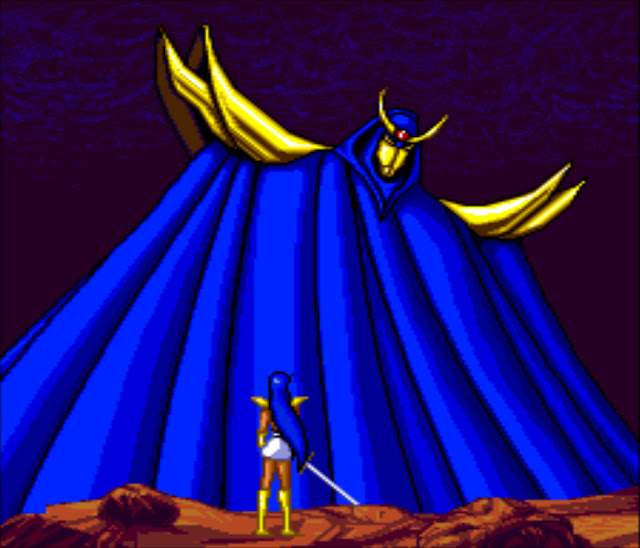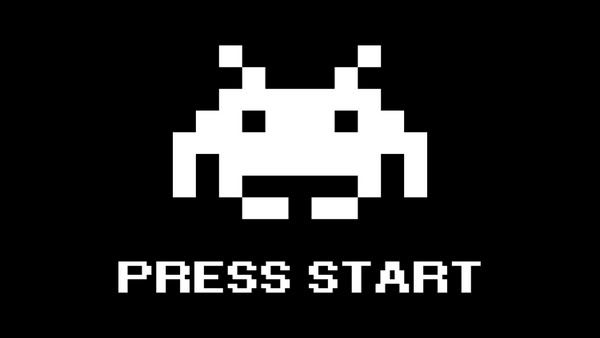Let's get something straight right from the get-go...Jim Power In Mutant Planet for the PC-Engine is not a very good game. Not in the slightest. However, exceptions can be made when the soundtrack for said game is absolutely mind-blowing. So before we continue, please enjoy this six-minute mix of Jim Power music, composed by Chris Huelsbeck. It's pure 80's sci-fi synth heaven.
If you've ever seen Bill & Ted's Excellent Adventure, or if you grew up in California during the 80's and experienced the dialect of skater boys, valley girls, surfer dudes and other "extreme" social circles, get ready to be totally annoyed by this bogus game's dialogue dudes!
If you happened to own the first PlayStation (PS1) console in the U.S. between 1995 to mid-97, you might recall just how slim the pickings were when it came to the PS1's RPG game library back then. Considering how many Sports games, Action games and Platform games there were for the system at the time, RPG's were few and far between. It wouldn't be until Final Fantasy VII was released in August of 1997 that the PS1 would become the go-to console for RPG's, launching the popularity of the genre into the behemoth it is today. Let's take a look back at the few RPG's that did exist on the PS1 pre-FFVII.
L-ZONE --- A hyper-automated city built by a mad scientist.
Beneath a gigantic dome rise monumental buildings. Within them extend vast spaces.
The tense air throbs within the hum of machinery.
A realm chock-full of idling machines, yet not a soul stirs.
The moment the switch is thrown, L-ZONE awakes.
The whine of machinery...a robot starts to move...the flash of a nuclear explosion.
Pass down the corridors, open every door, evade each trap.
When you've gone through all the zones, the path to planet Green will show itself.
Activate the machines!
Solve L-ZONE's riddle!
Throw open the door to planet Green!
The Valis series was a popular side-scrolling action platformer from Japan that produced four sequels and several remakes throughout the 90's. Telenet Japan developed the first game titled Valis: The Fantasm Soldier for the Sony MSX computer in 1986, followed by the Famicom/NES a year later. The game was then remade for the Sega Genesis, Super Nintendo and various other systems. The heroine of the series is a blue-haired schoolgirl named Yuko, who is chosen to protect a realm called Vecanti, the Dream World. To do so she must wield a magical sword called Valis.
My first experience with the Valis franchise began in 1989 when Valis II was released for the TurboGrafx-16 as a Super CD-ROM. It was one of the first action games for the Super CD-ROM and I loved the game for it's challenging and unique level designs.
For whatever reason, the folks responsible for localizing games decided Valis: The Fantasm Soldier would never be released in the U.S. for that console, and only ported over to the PC-Engine in Japan well after Valis IV. This first game became a mystery to me for several years until I was finally able to get my hands on the PC-Engine import.
Valis: The Fantasm Soldier kicks off with Yuko waking up and going to school, like any normal day...only to be bombarded by demons before she's able to make it to class. A magical sword appears in her hand, and off she goes, demon-slaying her way from school and down into the subways.
After she beats the first boss a giant priestess appears and transforms Yuko into a warrior, pleading with her to save Vecanti before the demons take over Earth. A warlord named Rogles is trying to take over the realms, and in an effort to thwart Yuko's attempts to save them he brainwashes her best friend Reiko...leaving Yuko with a lot of saving to do.
The action in Valis is very similar to the Castlevania series. Yuko can access all kinds of power-ups for the Valis sword, and you can level-up these power-ups three times by collecting three of the same power. Yuko can also collect stars which gives her magical abilities such as fire shields or the ability to unleash earthquakes on her foes. There are enough power-ups and abilities to make experimenting fun while scrolling through the levels.
The cutscenes in Valis (and it's sequels) are simply amazing, and were a big part of the franchise's allure. They were lenghty for their time, and featured beautiful panoramas with scrolling backgrounds and stereo-sound effects. This added a new dimension to storytelling in a side-scrolling game.
Level design for the first Valis is unfortunately the weak point, at least in this remake version...which is sad considering the fact it came out well after the superior Valis II. The areas aren't very well detailed as other games in the series, and the platforming is pretty cut and dry with virtually no obstacles in the beginning. You just run through the levels killing baddies, and before you know it you're facing the level's boss.
The bosses aren't very challenging either, and you'll beat most in one or two tries. Thankfully this changes as the game progresses, but the only level I found to be difficult was the last...and boy is it brutal. Prepare to stock up on HP and MP if you intend to even put a scratch on final boss Rogles.
Poor level design aside, I still give all due respect as this is where it all began for the Valis franchise. The series would only get better, and I plan to dive into the other sequels for future posts soon enough. I highly recommend playing this series on the TurboGrafx-16 and PC-Engine versions, as they are considered the best experience. If you love side-scrollers and have yet to play a Valis game, now's the time!
Arcades were a pretty big deal when I was a kid. I had parents who loved to gamble, so they would take me to places like Circus Circus or other casinos and drop me off at the nearest arcade so they could try their luck on the tables for an hour or two. I didn't mind at all. Armed with dozens of quarters, I was prepared to take on any game in the place. And then I heard a loud, evil voice declare, "Beware, Coward!"
The Nintendo Entertainment System continues to amaze me, almost 30 years after the fact. Exhibit A: Clash at Demonhead. I first ran across this game a few years ago while shopping for NES games on eBay. The game cover immediately jumped out at me. Take a look at that cover art for a second -- there is no denying this is one awesome-looking game.
The Devil Inside was a 3rd-person shooter developed by Cryo Interactive and written by Hubert Chardot (of the Alone In The Dark series) in the year 2000. And what a strange game this is. The game is about a reality TV show called, "The Devil Inside" where host Jack T. Ripper of the WWWL@ network challenges contestants to a live game of survival horror.
Psygnosis was a UK game developer that made games for the Amiga and other video game systems in the 80's and 90's. Most of their games had a very distinctive style, from unique graphics and awesome soundtracks, to hard and punishing gameplay.
 In 1983 Laserdisc games were introduced in Arcades, and the now classic Dragon's Lair made huge impressions among players. Game company Williams took notice, and while their penchant was in building great pinball machines, they didn't want to overlook the Laserdisc phenomenon.
In 1983 Laserdisc games were introduced in Arcades, and the now classic Dragon's Lair made huge impressions among players. Game company Williams took notice, and while their penchant was in building great pinball machines, they didn't want to overlook the Laserdisc phenomenon.And in 1984, they released their first and possibly only Laserdisc-powered Arcade game: Star Rider.
Star Rider was unique in that the player would ride on a "cosmic cycle" attached to the cabinet and would race on a surreal highway of enhanced video thanks to the power of what Williams' called the Discan System. The riders themselves would be superimposed in the foreground, leaving for plenty of power for each track to display astonishing outer-space landscapes.
As the Star Rider, the mission was to win each race, which centers around a space stadium called the Cosmodrome. There are a handful of different worlds, and each world features different astronomic vistas. To win a race you'll need to avoid hitting other bikers as well as any obstacles on the path to victory. It's a simple racing premise which was eclipsed by modern games such as Wipeout, but Star Rider was truly ahead of it's time with it's stunning surreal imagery and vivid graphics.
Adding to it's appeal is the fact that it's a very rare Arcade machine to find, and no ROM yet exists of the game for play on personal computers...it's basically become an enigma within the Arcade world. So if you are ever lucky enough to encounter a Star Rider cabinet, do yourself a favor....play it.
Here is a promotional flyer for Star Rider:
And here is a look at the background visuals (minus the riders) set to the tune of Foreigner's, "Starrider":
Subscribe to:
Posts (Atom)

